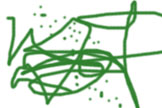|
scribbling (mark making) stage babies that smear food are learning to scribble pounding a marker on paper is an early variation of scribbling a child that can grab your finger is old enough to hold a crayon for scribbling how to work with children who scribble on walls
All
rights reserved. This page © Marvin Bartel.
For permission
to make
copies or handouts, e-mail
the author.
Sources:
Many authors and researchers in
art education have written about the
stages
of artistic development.
Viktor Lowenfeld made many
observations and described the stages in his
book, Creative and Mental Growth. The 4th edition
of Creative and Mental Growth
by Viktor Lowenfeld and W. Lambert Brittain. 1964 includes a
summary with charts describing the development stages in Chapter 13.
pages 395 to 402. |



